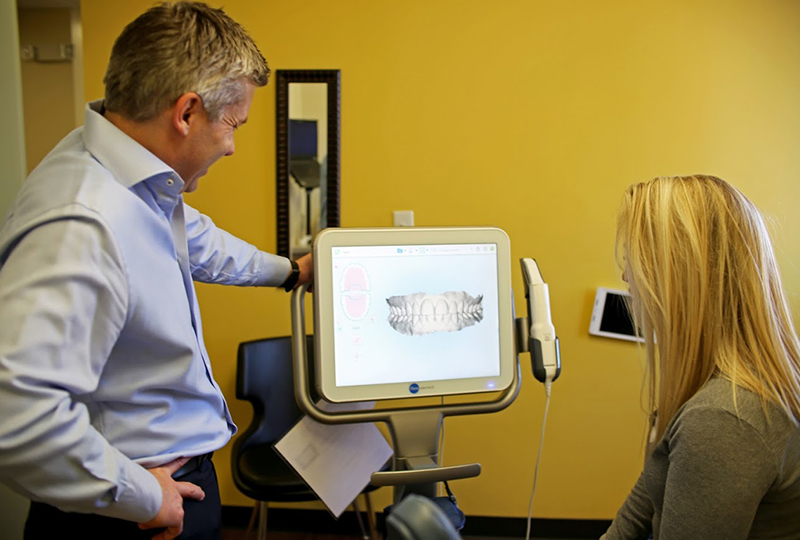Orthodontic treatment is a meaningful investment in your health, appearance, and confidence. Whether you're considering braces or clear aligners, understanding the factors that affect the cost of treatment can help you plan more effectively and choose the right path for your smile.
While many people begin their orthodontic journey by asking, “How much will it cost?”, the answer isn’t always straightforward. Several variables can impact the final cost—including the type of treatment, complexity of the case, and geographic location. This guide will break down those factors and provide insights to help patients and families in Phoenix and beyond make informed decisions.
What Goes Into the Cost of Orthodontic Treatment?
Orthodontic care is personalized to each patient, and pricing reflects that customized approach. Here are the most common factors that influence the overall cost:
Type of Treatment
- Traditional Braces — Typically the most affordable option, especially metal braces. Ceramic braces may cost more due to their more discreet appearance.
- Clear Aligners — Custom-made and nearly invisible, aligners tend to be slightly more expensive, especially for complex cases or premium systems.
- Specialty Appliances — Devices used for early intervention or to address jaw alignment may add to overall costs.
Complexity of the Case
- Mild issues — Such as small gaps or slight crowding, are typically quicker and less expensive to treat.
- Moderate to severe misalignments — Require longer treatment times and more adjustments, which can raise the total cost.
- Jaw discrepancies or bite issues — May necessitate additional appliances or longer monitoring, increasing both time and cost.
Duration of Treatment
- Most orthodontic treatments last between 12–30 months.
- The longer the treatment, the more visits and adjustments are required—affecting both time and cost.
Location
- Costs can vary depending on the region and local cost of living.
- Urban areas like Phoenix may have a wider range of pricing due to more providers and varied practice sizes.
Provider Experience
- Orthodontists with advanced training or those who specialize in specific treatments may charge higher fees.
- However, expertise often translates to more efficient, precise treatment—which can be beneficial long-term.
Average Cost Ranges for Orthodontic Care
While prices can vary, here are general estimates for common treatment types:
- Metal Braces — $3,000 to $6,000
- Ceramic Braces — $4,000 to $7,000
- Clear Aligners — $4,000 to $8,000
- Early Phase or Two-Phase Treatments — $2,000 to $5,000 per phase
- Retainers and follow-up care — Often included, but replacement retainers may cost extra
These figures are general estimates and will differ based on individual treatment plans and provider-specific pricing.
What’s Typically Included in the Cost?
Reputable orthodontic practices provide a comprehensive fee structure that usually includes:
- Initial consultation and digital scans
- Full treatment plan and appliances (braces or aligners)
- All adjustment visits and check-ins
- Emergency visits (if needed)
- Retainers at the end of treatment
- Post-treatment monitoring
Always ask for a detailed breakdown of what is—and isn’t—included in the total cost so you’re not surprised by additional fees down the road.
Does Insurance Cover Orthodontic Treatment?
Many dental insurance plans offer partial coverage for orthodontic care, especially for children under 18. Adults may also receive some benefits, depending on the plan.
Important insurance points to keep in mind:
- Plans often have a lifetime maximum benefit for orthodontics (e.g., $1,500–$2,500)
- Coverage is usually a percentage of the total cost (often 50%)
- Pre-authorization may be required before starting treatment
- Some plans only cover specific types of braces or providers
It’s a good idea to check with your insurance company and orthodontic office in advance to understand your benefits and eligibility.
What About Financing Options?
Orthodontic care is a long-term investment, and many practices offer flexible payment options to make it more manageable. These may include:
- In-house payment plans — Monthly payments spread out over the course of treatment, often interest-free.
- Third-party financing — Options like CareCredit offer longer-term financing with flexible terms.
- HSAs and FSAs — Health Savings Accounts and Flexible Spending Accounts can be used to cover treatment costs with pre-tax dollars.
Ask your provider what options are available to make care affordable without compromising quality.
The Value Behind the Price
It’s easy to focus on the price tag, but orthodontic treatment offers lifelong value that goes beyond aesthetics. Properly aligned teeth can lead to:
- Easier brushing and flossing
- Reduced risk of cavities and gum disease
- Improved bite and jaw function
- Fewer headaches and TMJ issues
- Greater confidence and social comfort
In many cases, investing in treatment now prevents more costly and complex dental issues later.
Orthodontic Costs in the Phoenix Area
For families in Phoenix, Gilbert, and surrounding areas, treatment costs can be influenced by factors such as practice location, provider experience, and local demand. The good news? Options are available for every budget, and many orthodontists offer free initial consultations to explore what’s possible without commitment.
Taking that first step is often the hardest—but also the most important. A consultation will provide a personalized quote, timeline, and treatment recommendation tailored to your goals and financial needs.
Curious about your options? Schedule a complimentary consultation with Team Orthodontics today to get a clear, customized estimate and start your journey toward a healthy, confident smile.
